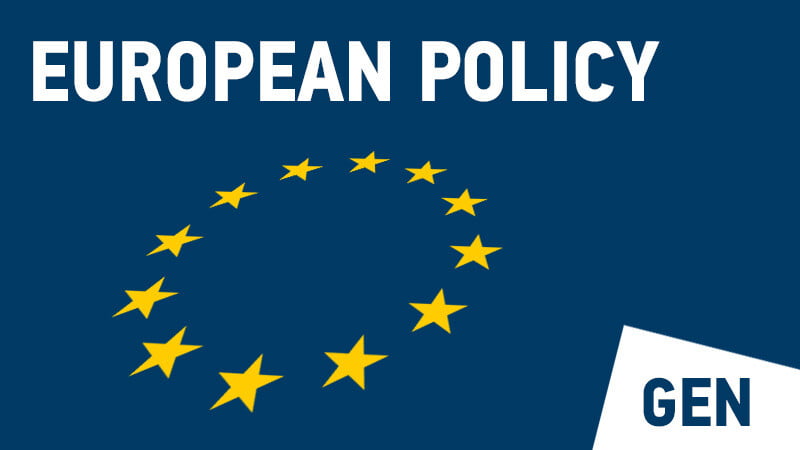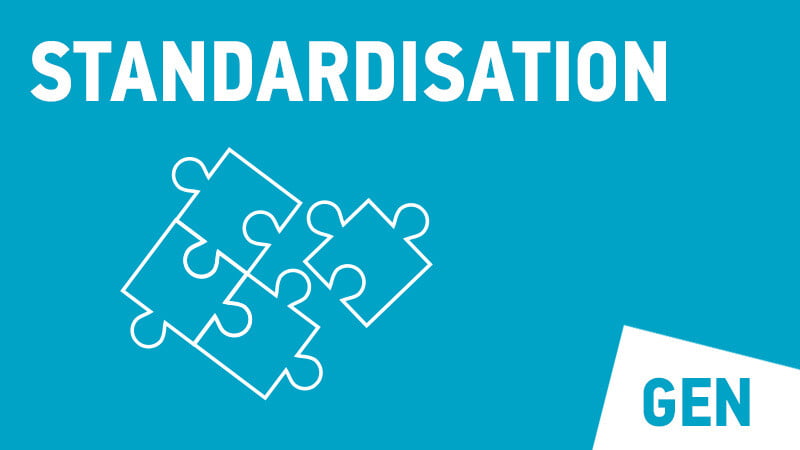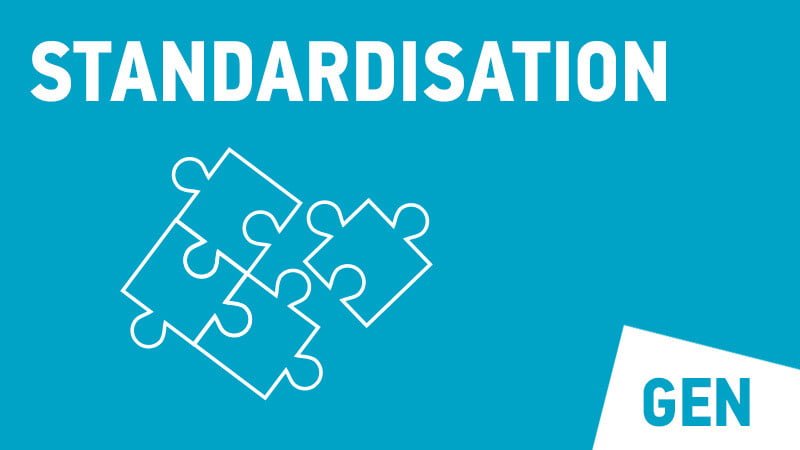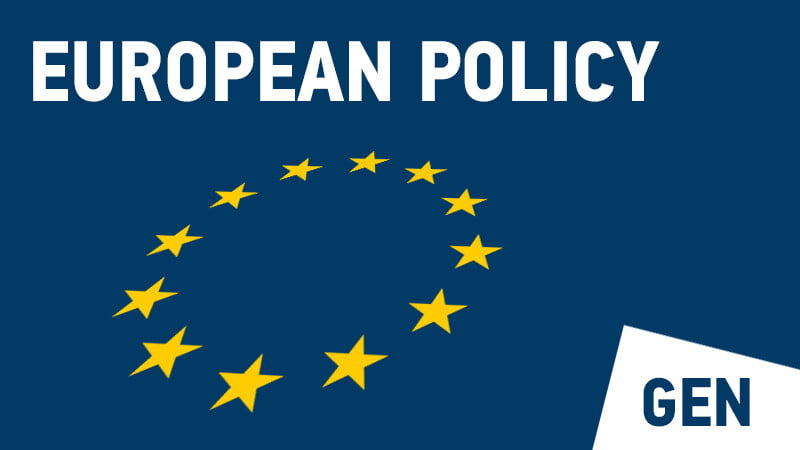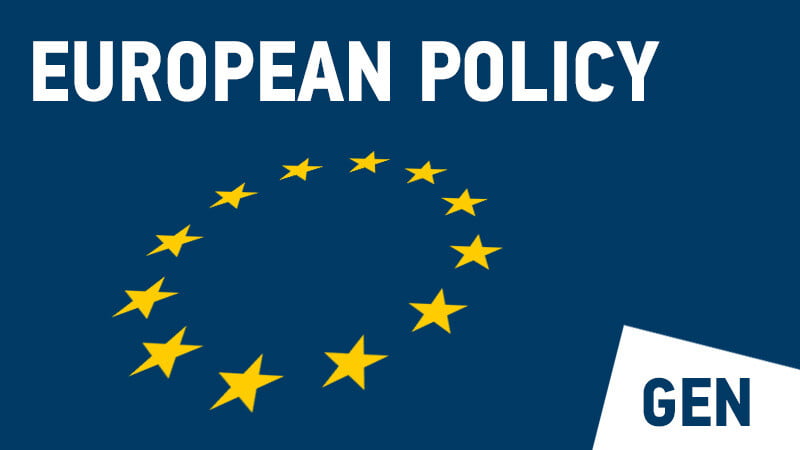GEN – 1441.00. Last month, the Council of the EU reached an agreement on the proposal to revise the EPBD. The aims are to ensure that all new buildings are zero-emission by 2030 and that the existing buildings become zero-emission by 2050.
In the details, however, the Council’s position is less ambitious than the Commission proposal and would keep significant flexibility for Member States.
Summary of the Council position
The Council finalised its position on the EPBD revision proposal submitted by the Commission on 15 December last year. A summary of its position and differences with the Commission proposal is below.
Article 3 – National building renovation plans
Some amendments on the links with national energy and climate plans, and proposal to postpone the submission deadline of the first plan by 1 year.
Article 6 – Cost-optimal framework
Proposal to move up the revision of the cost-optimal framework by 1 year.
Article 7 – New buildings
Proposal that new public buildings should be zero-emission from 2028 instead of 2027 as proposed by the Commission. The deadline for all other new buildings remains 2030. However, the definition of zero-emission building is significantly amended (see Article 9b).
The injunction to ‘address the issues of healthy indoor climate conditions’ in both Article 7 (new buildings) and Article 8 (existing buildings) remains.
Article 9 – Minimum energy performance standards (for existing buildings)
Proposal to specify maximum energy performance thresholds expressed in primary energy use rather than energy performance classes (A-G) as proposed by the Commission.
Non-residential
The first threshold is defined at the energy performance that cuts off the 15% worst-performing non-residential buildings in 2020. This threshold should be met by all non-residential buildings by 2030.
The second threshold is the level that cuts off the 25% worst-performing non-residential buildings. This threshold should be met by 2034.
This is less ambitious than the Commission proposal, which required class F by 2027 and class E by 2030, where class F would have corresponded to the 15% worst-performing buildings.
Residential
MEPS proposed by the Commission (class F by 2030 and class E by 2033) rejected entirely. Instead, Member States shall set MEPS based on a national trajectory aimed at zero-emissions by 2050. The only specification is that the average energy use of the entire residential building stock should be at least equivalent to class D by 2033 and a nationally determined value by 2040. Moreover, Member States may opt not to apply these standards to single family houses, in which case they should ensure that those houses meet at least class D 5 years after they are next sold, rented, donated, or changed in the cadastre.
Article 9b – Zero emission buildings
Proposal to set the definitions of zero emission buildings at Member State level. The common definitional thresholds proposed by the Commission in Annex II are deleted.
It is only specified that a zero-emission building should (i) not cause any on-site carbon emissions from fossil fuels and (ii) its total annual primary energy use should be covered by renewables generated onsite, nearby, or from a renewable energy community (RED), or from an efficient district heating and cooling system (EED), or from carbon free sources.
Article 10 – Renovation passports
Proposal to introduce the renovation passport scheme by the end of 2025 rather than 2024 as proposed by the Commission. Moreover, the passport should be voluntary for building owners.
Article 11 – Technical building systems
Member States may set requirements related to the minimum part of renewable energy used for heating at building level and should strive to replace fossil-fuelled heat generators in existing buildings to achieve net-zero by 2050.
The requirement to equip zero-emission buildings with measuring and control devices for indoor air quality is kept, but the Council proposes to apply it only to non-residential buildings.
Article 12 – Smart readiness of buildings
Proposal to conclude the SRI test phase and have the Commission submit a report by 2026 to the Member States assessing the results. If the assessment is positive, only then shall the Commission adopt a delegated act requiring its application.
Article 15 – Financial incentives
Article 15 is a rare occasion where the Council proposes more ambition: the Commission had proposed to phase out subsidies for fossil fuel boilers by 2027. The Council suggests 2025.
Article 16 – Energy performance certificates
Proposal to move back by 1 year the compliance with the EPC template of Annex V. Harmonised scaling rejected – setting the scales left to the Member States. Introduction of a new mandatory class A0 for zero-emission buildings and voluntary class A+ for buildings that make a positive net annual contribution to the energy grid from on-site renewables. Agreement that EPC should be issued based on an on-site visit, but rejection of the shortened validity of EPC from 10 to 5 years proposed by the Commission.
Article 20 – Inspections of HVAC systems
Only relatively minor amendments on wordings and exceptions.
Annex I – Energy performance calculation framework
Option to use monthly time calculation intervals kept, whereas the Commission had proposed to use hourly or sub-hourly intervals.
The reference to EN 16798-1 survives.
Annex II – Template for national building renovation plans
Proposal to either scrap or makes optional many of the indicators proposed by the Commission. Health and well-being aspects are not included in the wider benefits.
Annex V – Template for energy performance certificates
Optional indicators for the presence of sensors and controls for indoor air quality maintained
Next steps
With the Council position finalised, the process awaits the position of the Parliament. The Parliament’s ITRE Committee vote is scheduled for 26 November 2022. The indicative Plenary sitting date is December 2022. The trilogue negotiations between the co-legislators will begin shortly afterwards.
Additional resources
- GEN – 1441.01 – Council General Approach on EPBD
- GEN – 1441.02 – Council General Approach on EPBD – Corrigendum
- https://www.consilium.europa.eu/en/press/press-releases/2022/10/25/fit-for-55-council-agrees-on-stricter-rules-for-energy-performance-of-buildings/



